
Worksheet with solutions is provided.
- Subject:
- Applied Science
- Architecture and Design
- Geometry
- Mathematics
- Material Type:
- Activity/Lab
- Provider:
- Achieve, Inc.
- Date Added:
- 07/12/2014

Worksheet with solutions is provided.

This task was developed by high school and postsecondary mathematics and design/pre-construction educators, and validated by content experts in the Common Core State Standards in mathematics and the National Career Clusters Knowledge & Skills Statements. It was developed with the purpose of demonstrating how the Common Core and CTE Knowledge & Skills Statements can be integrated into classroom learning - and to provide classroom teachers with a truly authentic task for either mathematics or CTE courses.

This task was developed by high school and postsecondary mathematics and health sciences educators, and validated by content experts in the Common Core State Standards in mathematics and the National Career Clusters Knowledge & Skills Statements. It was developed with the purpose of demonstrating how the Common Core and CTE Knowledge & Skills Statements can be integrated into classroom learning - and to provide classroom teachers with a truly authentic task for either mathematics or CTE courses.

This lesson unit is intended to help teahcers assess how well students solve problems involving measurement, and in particular, to identify and help students who have the following difficulties; computing measurements using formulas; decomposing compound shapes into simpler ones; using right triangles and their properties to solve real-world problems.
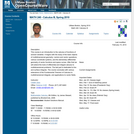
This course is an introduction to the calculus of functions of several variables. It begins with studying the basic objects of multidimensional geometry: vectors and vector operations, lines, planes, cylinders, quadric surfaces, and various coordinate systems. It continues with the elementary differential geometry of vector functions and space curves. After this, it extends the basic tools of differential calculus - limits, continuity, derivatives, linearization, and optimization - to multidimensional problems. The course will conclude with a study of integration in higher dimensions, culminating in a multidimensional version of the substitution rule.
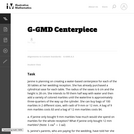
The purpose of this task is to use geometric and algebraic reasoning to model a real-life scenario. In particular, students are in several places (implicitly or explicitly) to reason as to when making approximations is reasonable and when to round, when to use equalities vs. inequalities, and the choice of units to work with (e.g., mm vs. cm).

Mending is an important part of archaeology, as it can be used to establish relationships between different parts of an archaeological site. This resource is a tutorial detailing how to perform a ceramic mending activity with your students. Use it to support Maryland Math Standard 7.G.B.4-6 for grade 7 by focusing on the mending of round ceramics and determining their circumference or diameter from pieces. If you evaluate this resource or use it, please consider responding to this short (4 question) survey bit.ly/3rw0WQY

This simulation allows you to observe the behavior of an object reflecting around a circular table.

Checklist for students to use to ensure that all aspects of a constructed response math problem are answered and checked over before completion.
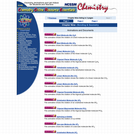
This collection of videos, animations and documents comes from the NCSSM AP chemistry online course. Chapter nine provides practice and demonstrations related to chemical bonding and geometry.
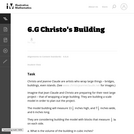
This task is primarily about volume and surface area, although it also gives students an early look at converting between measurements in scale models and the real objects they correspond to.
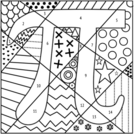
This resource is a 32 slide Desmos Activity. In the activity, students answer questions about calculating the raidus, diameter, circumference and area of given circles. Each correct answer allows them to advance to the Pi Coloring Page to add color to a section.
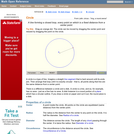
An interactive applet and associated web page defining a circle. The applet shows a circle where the user can drag the center and a point on the circle. The radius line supports the definition that all points on the circle are a fixed distance from the center. The web page has the definitions of all the circle-related objects, such as diameter, chord etc, with links for each. Applet can be enlarged to full screen size for use with a classroom projector. This resource is a component of the Math Open Reference Interactive Geometry textbook project at http://www.mathopenref.com.
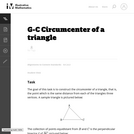
This task shows that the three perpendicular bisectors of the sides of a triangle all meet in a point, using the characterization of the perpendicular bisector of a line segment as the set of points equidistant from the two ends of the segment. The point so constructed is called the circumcenter of the triangle.
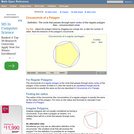
An interactive applet and associated web page that show the properties of a circumcircle of a polygon. The applet shows a regular polygon where the user can drag the vertices to reshape it and alter the number of sides. As the polygon is being varied, the circumcircle is shown, passing through all vertices. The text describes two ways to calculate the radius of the circumcircle, depending on what you are given to start. Applet can be enlarged to full screen size for use with a classroom projector. This resource is a component of the Math Open Reference Interactive Geometry textbook project at http://www.mathopenref.com.
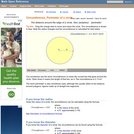
An interactive applet and associated web page that demonstrate the circumference of a circle. The applet shows a circle with a radius line. The radius endpoints are draggable and the circle is resized accordingly. The formula relating radius to circumference is updated continually as you drag. Introduces the idea of Pi. The formula can be hidden for class discussion and estimation. See also the entries for circumference and diameter. See also entries for radius and diameter. Applet can be enlarged to full screen size for use with a classroom projector. This resource is a component of the Math Open Reference Interactive Geometry textbook project at http://www.mathopenref.com.
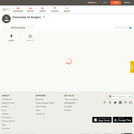
This short video and interactive assessment activity is designed to give fourth graders an overview of angles.
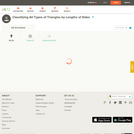
This short video and interactive assessment activity is designed to teach fourth graders about classifying all types of triangles by lengths of sides.
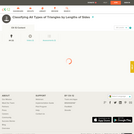
This short video and interactive assessment activity is designed to teach third graders about classifying all types of triangles by lengths of sides.
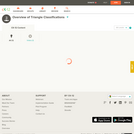
This short video and interactive assessment activity is designed to teach third graders an overview of triangle classifications.